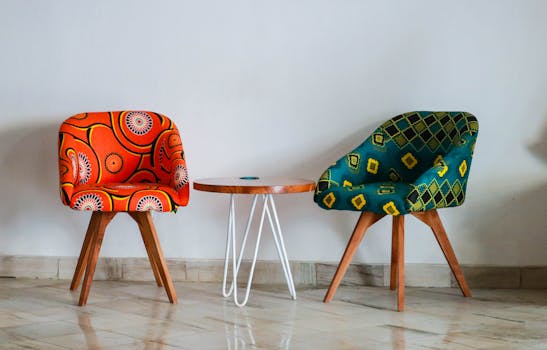Practical Suggestions for Choosing the Ideal Furniture for a Small, Comfortable, and Functional Living Room
In today’s fast-paced world, many people find themselves living in smaller spaces, particularly in urban environments. A small living room can pose challenges when it comes to selecting furniture that is both functional and comfortable. However, with the right approach, you can create a cozy and stylish living area that meets your needs. This article provides practical suggestions for choosing the ideal furniture for a small living room.
Understanding Your Space
Before diving into furniture selection, it’s essential to understand the dimensions and layout of your living room. This will help you make informed decisions that maximize your space.
- Measure Your Space: Use a tape measure to determine the length and width of your living room. Take note of any architectural features such as windows, doors, and built-in shelves.
- Consider Traffic Flow: Ensure that there is enough space for movement. A good rule of thumb is to leave at least 24 inches of walking space between furniture pieces.
- Visualize the Layout: Use graph paper or online room design tools to create a scaled layout of your living room. This will help you visualize how different furniture pieces will fit together.
Choosing the Right Furniture
When selecting furniture for a small living room, it’s crucial to prioritize pieces that are both functional and space-efficient. Here are some tips to consider:
Opt for Multi-Functional Furniture
Multi-functional furniture can save space and add versatility to your living room. Consider the following options:
- Sofa Beds: A sofa bed can serve as both a comfortable seating area during the day and a sleeping space for guests at night.
- Storage Ottomans: These can be used as footrests or extra seating while providing hidden storage for blankets, magazines, or toys.
- Expandable Coffee Tables: Look for coffee tables that can be raised or extended to accommodate snacks or drinks when entertaining.
Choose Lightweight and Modular Pieces
Lightweight furniture can be easily rearranged to suit your needs. Modular furniture allows you to customize your layout. Consider these options:
- Sectional Sofas: These can be configured in various ways to fit your space and can often be separated into smaller pieces.
- Stackable Chairs: These can be stored away when not in use, freeing up floor space.
- Foldable Tables: A foldable dining or coffee table can be expanded when needed and tucked away when not in use.
Color and Design Considerations
The color and design of your furniture can significantly impact the perception of space in your living room. Here are some suggestions:
- Light Colors: Opt for light-colored furniture to create an airy feel. Whites, pastels, and light grays can make a small room feel larger.
- Transparent Materials: Glass or acrylic furniture can create a sense of openness and reduce visual clutter.
- Consistent Design: Choose furniture with a cohesive design style to create a harmonious look. Mixing too many styles can make a small space feel chaotic.
Incorporating Accessories Wisely
Accessories can enhance the comfort and functionality of your living room, but they should be used judiciously. Here are some tips:
- Use Mirrors: Mirrors can create the illusion of more space. Consider placing a large mirror on one wall to reflect light and make the room feel larger.
- Limit Decorative Items: Choose a few key decorative pieces rather than overcrowding surfaces. This will help maintain a clean and organized look.
- Vertical Storage: Utilize wall-mounted shelves or tall bookcases to keep the floor clear while providing storage and display space.
Conclusion
Choosing the ideal furniture for a small living room requires careful consideration of space, functionality, and design. By measuring your space, opting for multi-functional and lightweight furniture, and being mindful of color and accessories, you can create a comfortable and stylish living area that meets your needs. Remember, the key to a successful small living room is to prioritize functionality without sacrificing comfort. With these practical suggestions, you can transform your small living room into a cozy retreat that reflects your personal style.
